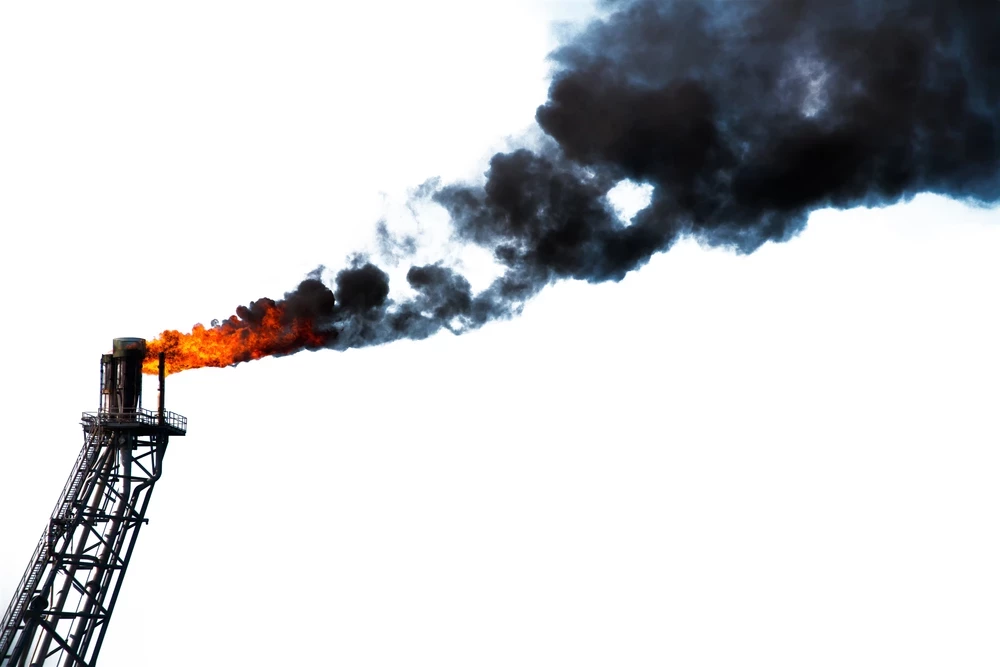US sanctions, Iranian production, and global LNG
How the United States are vying to outdo Iran's energy sector
Add bookmarkTrump, Obama, and differing approaches
The shale gas revolution has had a staggering effect on the world energy market, shifting many prior assumptions regarding the geopolitics of energy.
In the early 2000s, shale oil and gas accounted for just one per cent of all fossil fuels produced in the US. in recent months, however, the country has now moved towards energy self-sufficiency and is taking on the role of an exporter.
Whereas the Obama administration fostered this development as a means of freeing the country from foreign dependency through diversification and increased green energy supplies, the Trump administration seems to have focussed on a more traditional approach to energy.
US self-sufficiency
The shale gas revolution and consequent US energy boom finally mean that a static fact of world energy geopolitics (that the US was dependent on oil mainly imported from the Middle East) can be cast aside. The US is now energy self-sufficient and free to export Liquefied Natural Gas to neighbours and allies around the world, and has thus added to Washington's political flexibility. Not surprisingly, this turn of events is being monitored closely by other energy exporters.
The US is already using its energy exports to reduce the EU's dependency on Russian gas, while exerting pressure on its allies to see it as an alternative to Iranian natural gas.
See also: Top 10 oil & gas companies: NIOC
The uptick in gas production in the US has already decreased LNG prices in the EU and Asia, and thus presents a challenge to the old energy order. In terms of US national security, the energy boom can be examined from two perspectives - first, its implications for US energy security, and second, its implications for the wider field of international relations and its geopolitics.
US withdrawal from the Iranian nuclear deal
Iran's economy and energy sector has been highly affected by the US and EU sanctions in response to Iran's attempts to build a nuclear programme. Sanctions have not only harmed Iran's chances of success in achieving its energy goals, but also have forced Iran to become more proactive in consolidating regional relations.
Since Washington's departure from the JCPOA, energy companies who had only just begun to consider re-entering Iran have withdrawn in anticipation of further sanctions. Few international banks or financial institutions are willing to participate in energy projects in Iran under such conditions.
The US is interested in reducing Iran's role in regional and global energy markets, with Washington often declaring a wish to bring Iranian oil production down to zero. American sanctions against Iran's energy sector have vastly reduced the country's production capacity, and may have knock-on effects on technology and finance.
US LNG and exports
The US plans to increase LNG exports to countries which depend on Iranian hydrocarbons in an attempt to wean these countries off their reliance. But some analysts believe the US oil and gas sector is unlikely to gain Iran's share of the market. This is because Iran's export oil grades are heavier and sourer than the light, sweet crude exported from the US.
Energy exports play a key role in US relations with its neighbours and allies, and are a key tool in fostering and furthering relations with others. Energy exports as a means of expanding relations and helping US allies in South Asia and Europe are sure to lead to interesting geopolitical developments, and US LNG exports are most likely to be effective in reducing Iranian oil exports to Japan and South Korea.
Turkey and India
Turkey is a major purchaser of Iranian natural gas. Turkey has huge investments in LNG storage facilities, and plans to increase its share of LNG in the domestic energy market. In 2015, Turkey began to import LNG from the US, and is now the second-largest importer of US LNG in Europe.
You might be interested in: An opportunity for electricity in Iran's oil and gas industry
An increase in US and Qatari LNG - alongside new natural gas transit projects such as TANAP and the Turkish Stream - means that Iran may be largely sidelined by Turkey in the near future. Similarly, India has also signed a 20-year agreement to be supplied with US LNG, also ensuring a reduction of Iranian supplies to the Indian energy market over a similar period.
South Korea
Seoul is one of the main customers of Iranian gas condensate. More than 55 per cent of Iran's gas condensate is exported to South Korea. According to official statistics from the Ministry of Oil, Iranian gas condensate exports in 2017 numbered 428,000 barrels per day on average.
Since the US withdrawal from the nuclear deal, major Korean companies importing Iranian oil and gas condensate have cut imports from Iran. In the first six months of 2018, the Hanwa Total Petrochemical Company, the largest importer of Iranian gas condensate, imported 15.92 million barrels from Iran, but since August has reduced its imports to one-third, in favour of supplies from Qatar and the United States.
Japan
Japan is another main consumer of Iranian oil in East Asia. According to the Japanese Petroleum Association, the country imported 172,216 bpd of oil from Iran in 2017, down 24.2 percent from the previous year. Iran's oil accounted for 5.3 percent of total oil imports to Japan's refineries in 2017.
Following the US withdrawal from the treaty, the country further cut imports of oil from Iran. Japan now imports 5.5 per cent of its oil from Iran, according to the Japanese Ministry of Economy and Trade. In August, Japan was receiving 17,775 barrels per day and bought 3.39 million barrels of crude in one month.
Japan called for an exemption from the US embargo on Iran, which was granted by the Trump administration - but only for six months. Part of Iran's share of oil is expected to fall victim to an influx of LNG exports and US gas condensate onto Japan's market.
Sanctions and Iran's diminishing share
Sanctions against Iran's energy industry have not only reduced oil and gas production capacity, but also reduced Iran's share of the global energy market. The rising lack of investment in the Iranian oil and gas industry is one particularly immediate result of renewed sanctions.
[inlinead]
Reducing oil production capacity and, consequently, reducing Iran's oil export potential will force Iran to find loans and facilities from banks and global financial institutions in order to develop its facilities - yet it is clear that new US sanctions will challenge Iran's ability to retain much of its oil production capacity regardless.
Given the increase in natural gas producers and LNGs on the market, the US energy boom provides a good opportunity for Iran's rivals - not least the US itself - from moving in on Iran's share of the regional and global energy market.
New markets
The increase in US oil and shale gas production has pressured Iran to find new markets, yet the country does not have the capacity to produce LNG, thus competing with the US, and it is unclear when the capital and technology needed to complete its LNG project units will be provided.
See also: Iran's frustrations with oil and gas fields
The US superiority in terms of advanced technology, research, investment, and diplomatic reach ensure it will retain a high position in the world energy market, while Iran will likely flounder further. If Iran and the US agree on current political and security problems, Iran may gain the foreign capital and technology needed to recover some of its oil and gas production capacity.
Energy continues to play an important role in US foreign policy, with implications not only on relations with designated rivals but also allies across the world.
Omid Shokri Kalehsar is a Washington-based energy security analyst. Follow him at @ushukrik and uskenergy.com.
















